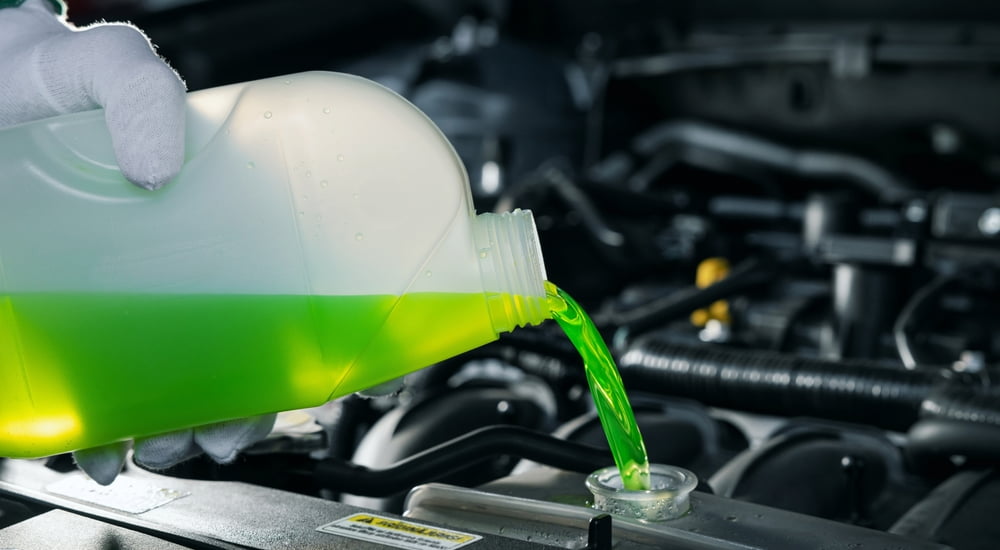Some like it hot, but your vehicle is a notable exception. Excessive heat is the enemy of any mechanical system, including the engine found in your car, truck, or SUV. Overheating can lead to everything from minor failures and performance issues to a full-on breakdown. Ideally, your engine should maintain a steady temperature that’s somewhere around 195 to 220 degrees, but how does a hardworking engine keep its cool? It all comes down to the radiator. The radiator’s job is to keep your engine (and automatic transmission) as cool as possible by helping to dissipate the heat created by the internal combustion process. How does a radiator work, and what sort of maintenance does it need? What are some common signs and symptoms that you might need a radiator repair? We’ll address all those questions as we explore the intricacies of the modern radiator.
What Is a Radiator?
Some components and systems packed under your vehicle’s hood are complex marvels of modern engineering, but your radiator isn’t one of them. A radiator is really just a large metal tank at the front of the engine compartment filled with coolant. This hot coolant flows through the radiator, where fins and an electric fan work to disperse the heat before returning it to the engine for another go-around. A network of tubes runs in and out of the radiator, funneling colder coolant towards the engine in one direction and receiving hot coolant from the engine in the other.
Cooling the engine might be a radiator’s primary function, but in most vehicles with automatic transmission, it pulls double duty to keep the transmission fluid cool as well. This is accomplished through a transmission cooler located inside the radiator, which works as a smaller version of the radiator while keeping the transmission fluid separated from the coolant flowing through the engine. It’s a remarkably simple system, but it works quite well to prevent an engine from overheating. There’s no understating the importance of a well-functioning radiator when it comes to a vehicle’s safe operation and longevity. An overheated engine can lead to some of the most drastic and expensive issues a driver could ever hope to face, including permanent damage to the engine, gaskets, hoses, seals, and more.

Radiator Maintenance Tips
Check the Fluid: In an ideal world, the amount of coolant in your radiator should stay fairly consistent over time. If you suddenly notice that your coolant is getting a bit low, it could be a sign of an overheated engine or a leak somewhere in the system. Luckily, checking your radiator’s coolant level is one of the easiest maintenance tasks a driver will encounter. Simply pop the hood, locate the plastic reservoir tank, and look for the markings that indicate the maximum and minimum acceptable coolant levels. This check should be performed when the vehicle has been sitting for a while and is fully cooled to get an accurate reading. If your coolant seems a little low, feel free to top it off, but keep a close on the system, as a low fluid level could indicate a larger problem.
Use the Correct Coolant: Before you grab the first bottle of coolant you see on the shelf of your local auto parts store, break out your owner’s manual or do a quick internet search to ensure you’re using the correct product. It might not seem like it would make much of a difference, but some vehicles can be rather picky about their coolant. This is especially true of cars, trucks, and SUVs that use copper-brass radiators, which can have drastically different requirements from the aluminum versions found on most vehicles. In addition to helping cool the engine, coolant also resists freezing better than plain old water and features rust inhibitors that’ll help keep the cooling system in tip-top shape.
Mix It Up: Picking the correct coolant is about more than just the specific brand or formula. Most vehicles actually require a 50/50 mix of coolant and water. While many commercial coolants already come pre-mixed, it’s always good to take a closer look at the bottle before dumping it into the reservoir. If you buy a concentrated coolant that needs to be mixed with water, use distilled water whenever possible, as it’s less likely to hold contaminants. If you find yourself in an emergency situation where only undiluted coolant is available, make sure to top it off with an equal amount of water as soon as you get a chance.
Check for Leaks: As we mentioned, your radiator shouldn’t lose any fluid if everything is in good working order. If you do notice a suspiciously low amount of coolant, try doing a quick visual inspection of the hoses that run to and from your radiator, as well as those attached to the reservoir. Keep an eye out for any leaks, as well as tears, holes, and any other obvious damage. Finally, check the clamps that keep the hoses in place and confirm that the radiator cap’s gasket is in good working order.
Flush It Out: Over time, coolant loses the temperature- and rust-fighting properties that allow it to do its job. That’s why performing a regular coolant flush and replacement is so important. This task should generally be performed every two years or 30,000 miles, though some extended-life coolant can go as long as 50,000 miles between flushes. Consider accelerating this schedule if you regularly operate your vehicle in harsh conditions, including dusty, mountainous, hot, or freezing environments, or if your vehicle is regularly used to tow larger loads. Overloading your vehicle means the radiator has to work even harder to keep everything cool. While it sometimes can’t be avoided, it does mean you should try to follow the severe maintenance schedule listed in your owner’s manual.

Signs of a Struggling Radiator
Overheating: The most common sign of a faulty radiator is an overheated engine. Luckily, you don’t have to wait until steam starts pouring out from under the hood to diagnose this malady. Every vehicle features some sort of engine temperature gauge on the dashboard gauge cluster. In ideal circumstances, this gauge should never rise past the halfway point. If it does, especially if it gets into the red zone, it’s time to give your radiator a closer look.
Low Coolant: Low coolant is a sign that there’s a leak somewhere in the system that needs to be addressed or possibly a chronically overheated engine. If you suspect a leak but can’t find clear evidence, try placing a sheet of clean paper under the radiator and inspect it for any drips that match the color of your coolant.
Odd Smells: If you suspect that you have a leak somewhere in your engine cooling system, just follow your nose. When coolant comes in contact with the hot metal elements under the hood, it produces a distinctive smell and some vaporous smoke. This smell is usually described as “sweet” and “warm,” while some claim it’s reminiscent of butterscotch or graham crackers. If you notice these tasty but alarming smells, a cracked radiator or leaking hose should be your first suspect.
Sludge: If your radiator has been compromised or is simply starting to wear out with age, you might notice a buildup of sludge, dirt, and debris when you check the coolant reservoir. This could point to a leak or crack somewhere in the system or an excess of rust in the radiator itself. This is one of the reasons why drivers should also use a high-quality coolant when flushing out their radiator.
Your vehicle’s radiator is both critical to a vehicle’s safe operation and relatively easy to maintain. This isn’t always a common combination in the automotive world, so take advantage of it and try to be mindful about sticking to your recommended service schedule. Be sure to make a coolant level check a regular part of your monthly maintenance routine. Spotting low coolant levels, leaks, or odd smells from the comfort of your garage or driveway sure beats discovering a near-empty reservoir when you’re suddenly broken down on the side of the highway. Always keep a spare bottle of coolant in your trunk and, if it’s the type that needs to be diluted, an equal amount of distilled water. A little radiator maintenance can go a long way when it comes to maintaining overall engine health and should be well within the wheelhouse of even the most mechanically-challenged DIYer.

